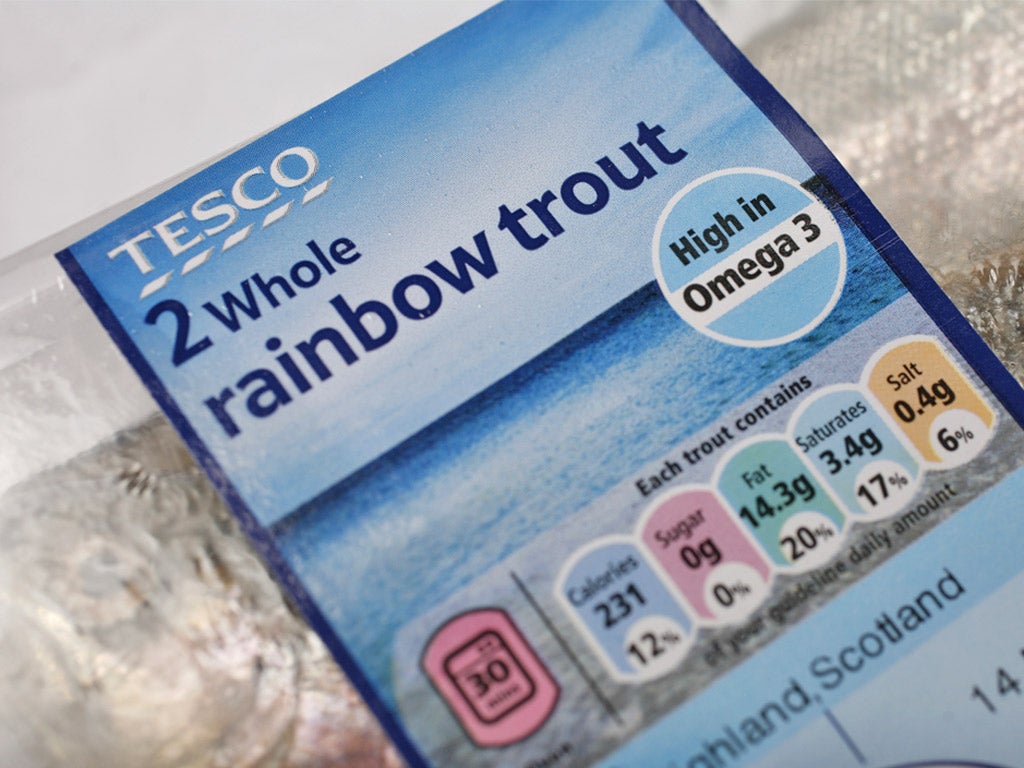Tesco joins rivals in using traffic light food labelling

Your support helps us to tell the story
From reproductive rights to climate change to Big Tech, The Independent is on the ground when the story is developing. Whether it's investigating the financials of Elon Musk's pro-Trump PAC or producing our latest documentary, 'The A Word', which shines a light on the American women fighting for reproductive rights, we know how important it is to parse out the facts from the messaging.
At such a critical moment in US history, we need reporters on the ground. Your donation allows us to keep sending journalists to speak to both sides of the story.
The Independent is trusted by Americans across the entire political spectrum. And unlike many other quality news outlets, we choose not to lock Americans out of our reporting and analysis with paywalls. We believe quality journalism should be available to everyone, paid for by those who can afford it.
Your support makes all the difference.After years of rebelling against official advice and protesting that using red, amber and green labels to signal the nutritional value of its products was too simplistic, Tesco is to adopt the popular "traffic light" system on its food and drink products.
The UK's biggest retailer said it had made the U-turn in response to new customer research showing that shoppers would prefer a combination of its long-favoured Guideline Daily Allowance (GDA) system with colour-coded consumption advice used since 2005 by many of its competitors, including Sainsbury's, Waitrose and Co-Op.
Although Tesco always maintained its resistance was nothing to do with fears of red labels hurting sales, it had argued that traffic lighting would see some products unfairly stigmatised.
It opposed the three-colour system to such an extent that in 2007 it helped launch a £4m advertising campaign promoting its alternative – printing plain percentages of sugar, salt, fat and calories for each serving.
But the Food Standards Agency, which regards the traffic light system as the best way to encourage healthy eating and tackle Britain's obesity problem, criticised the supermarket's approach, saying shoppers "can't always interpret the information quickly and often find percentages difficult to understand and use".
Tesco chief executive Philip Clarke said yesterday: "We always listen to our customers and they have told us that by combining our popular GDA labels with traffic light colour-coding we can make it even easier for them to make informed and healthy choices about the food they buy."
With Morrisons now the largest supermarket chain to use purely GDA labelling, rivals were quick to point out their side had won. A spokesman for Asda said the company would "like to welcome Tesco to the party", while Sainsbury's said a consistent approach would help both retailers and customers. "Over the years, other forms of colour coding have been used, but these have proved to be misleading for customers," said Sainsbury's chief executive Justin King. "The approach of those who do not use traffic light labelling has long been a barrier to achieving a consistent approach. We hope this announcement will encourage other retailers and manufacturers to join us in working together to help achieve a consistent labelling for customers, to help them make healthier choices, wherever they shop."
Join our commenting forum
Join thought-provoking conversations, follow other Independent readers and see their replies
Comments